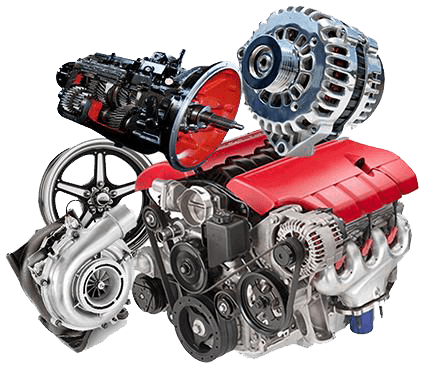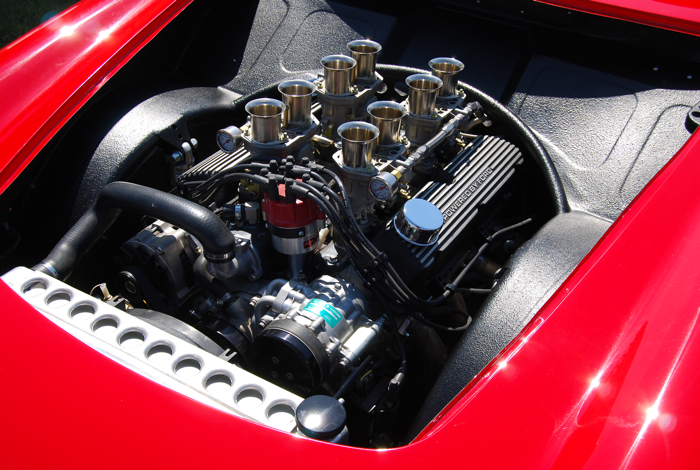Where to Discover the Best Opel Corsa Engine for Substitute
Where to Discover the Best Opel Corsa Engine for Substitute
Blog Article
Checking Out the Inner Operation of a Compact Car's Engine System
As drivers, we usually take for approved the detailed processes that occur within the boundaries of our car's engine system. In this exploration of a small car's engine system, we will unravel the inner functions of this mechanical harmony, dropping light on the mysteries that drive us forward on our everyday journeys.
Burning Refine Review
The burning process in a portable automobile's engine system is a crucial mechanism that successfully converts gas into energy to power the car. This process takes place within the combustion chamber of the engine, where gas and air mix, fire up, and create regulated explosions. The combustion procedure contains 4 primary phases: intake, exhaust, compression, and power.
During the intake stage, the piston moves downward, attracting a combination of air and gas into the burning chamber. The next stage, compression, involves the piston relocating up, compressing the air-fuel combination to raise its strength. Subsequently, in the power phase, the stimulate plug stirs up the compressed mix, resulting in a rapid development of gases that compels the piston pull back. This downward movement creates the power needed to drive the lorry. In the exhaust phase, the burned gases are gotten rid of from the combustion chamber with the exhaust valve, preparing the chamber for the following cycle. This cyclic combustion procedure is basic to the operation of a portable car's engine system, making sure effective energy conversion for propulsion.
Piston and Cyndrical Tube Communication

The piston's specific fit within the cyndrical tube is essential for maintaining optimal compression and stopping power loss during burning. Tight clearances between the piston and cylinder wall surfaces ensure reliable securing, enabling the piston to relocate efficiently without allowing gases to leakage past. Correct lubrication is also crucial to reduce friction and put on in between these parts, enhancing long life and efficiency.
Moreover, the style and materials made use of in producing the piston and cylinder influence engine effectiveness and toughness. Modern engines often use light-weight yet resilient materials like light weight aluminum alloys for pistons and cyndrical tube linings to reduce inertia and enhance thermal efficiency. In general, the harmonious interaction in between the piston and cylinder is fundamental to the engine's capability and overall efficiency.
Fuel Shot System Capability
Fuel shot systems in portable vehicle engines play an important function in specifically supplying gas to the burning chamber for controlled and efficient ignition. The gas shot system functions by injecting fuel into the combustion chamber at the ideal moment throughout the engine's procedure (opel corsa engine). This exact timing makes certain that the fuel blends equally with the air for correct burning, causing boosted gas performance and reduced exhausts
There are primarily two kinds of fuel shot systems used in compact lorry engines: port fuel shot (PFI) and direct gas injection (DFI) PFI systems infuse gas right into the consumption port before the intake valve, while DFI systems inject fuel directly into the combustion chamber. Both systems have their benefits, with DFI providing far better gas atomization and PFI supplying a much more affordable option.
Comprehending Engine Air Conditioning Mechanisms
Effective operation of a portable car's engine counts greatly on the efficiency of its cooling devices. The cooling Continue system in a portable automobile generally consists of numerous parts functioning together to regulate the engine temperature. Recognizing these engine cooling mechanisms is important for maintaining the performance and long life of a compact lorry's engine system.

Exhaust System Elements Explained
The optimal performance of a compact lorry's engine cooling devices depends on a corresponding system recognized as the exhaust system, which comprises various vital parts for making sure effective you can look here discharges and engine performance. The exhaust manifold collects exhaust gases from the engine's cyndrical tubes and courses them to the catalytic converter.
One vital component of the exhaust system is the oxygen sensor, which keeps track of the oxygen degrees in the exhaust gases to help control fuel intake and ensure ideal engine performance. opel corsa engine. Furthermore, the resonator may exist in some exhaust systems to reduce noise levels. On the whole, the exhaust system plays a crucial function in keeping engine performance, decreasing unsafe emissions, and making sure a next quieter driving experience for small automobile proprietors

Conclusion
To conclude, the portable lorry's engine system is an intricate combination of parts that collaborate to facilitate the combustion process, convert fuel into power, and expel waste gases. Comprehending the inner functions of the engine system, consisting of the piston and cylinder communication, fuel shot system, engine cooling systems, and exhaust system elements, is essential for maintaining ideal performance and performance of the car.
The combustion process in a portable car's engine system is an important system that effectively transforms fuel right into energy to power the vehicle.Gas shot systems in small car engines play a vital role in specifically delivering fuel to the combustion chamber for effective and controlled ignition.There are mostly two types of fuel shot systems utilized in small vehicle engines: port gas injection (PFI) and straight gas injection (DFI) Comprehending these engine air conditioning devices is important for keeping the performance and long life of a small vehicle's engine system.
The optimal performance of a portable vehicle's engine air conditioning mechanisms depends on a complementary system known as the exhaust system, which comprises different vital parts for guaranteeing reliable exhausts and engine efficiency.
Report this page